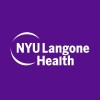
Prevention of OUD: The HOME Project (Housing, Opportunities, Motivation and Engagement)
Substance UseHomeless youth have a much higher rate of substance use than non-homeless peers with evidence suggesting that homeless youth have the highest rates of opioid use among youth subgroups in the country (Brands et al., 2005); heroin using homeless youth also appear to have the highest rates of IV drug use and HIV (Rhoades et al., 2014). Given the high rates of opioid use, exposure to violence, mental and physical health challenges, and high rates of mortality in homeless youth, it is surprising that no study to date utilizes a randomized controlled design to test prevention of opioid and other drug use among this vulnerable population. Resolution of youth homelessness through housing and prevention services, often referred to as "Housing First", as proposed in the current study, has great potential to reduce the likelihood for the development of an opioid use disorder as well as other problem behaviors associated with living on the streets. However, only 20-30% of homeless youth samples report ever having stayed at a crisis shelter, 9% report having ever accessed mental health services, and 15% report ever having received substance use treatment (Ray, 2006) indicating a need to reach and engage youth in services that are feasible and acceptable. This study will provide essential information for researchers and providers on the efficacy of housing + opioid and related risk prevention services in an RCT on opioid use, how moderators affect the response, and mechanisms underlying change.

COVID-19-Related Opioid Treatment Policy Evaluation
Opioid-use DisorderAlcohol Use DisorderOur nation is facing the COVID-19 pandemic during an ongoing opioid epidemic. Effective treatment for patients with opioid use problems involves a treatment method called Medication-Assisted Treatment, or MAT. In MAT, patients receive a medication that reduces cravings and withdrawal symptoms and can prevent overdose. Patients also receive counseling. Because the medications that are used in MAT are controlled substances, this treatment is subject to a number of federal regulations. The need for social-distancing during the pandemic would have made following these regulations very difficult for patients and their providers. Because of these difficulties, the federal government eased regulations in March 2020, making it easier for patients to receive MAT with fewer (if any) in-person visits for medication and counseling. Our team is studying the effects of these policy changes on the treatment that patients with opioid use disorder receive and on their outcomes. We are using both quantitative analyses of large, existing databases and qualitative analyses of interviews with patients, providers, and policy-makers to study these effects.

ACE, Resilience, and Substance Use Disorder: Maternal and Baby Outcomes in the First Year of Life...
Adverse Childhood ExperiencesThe purpose of this study is to understand maternal factors, including ACE and 7Cs Tool scores, and how they contribute to the health of mothers and their infant. The study will evaluate whether or not the outcomes of maternal and baby health can be identified early through the Adverse Childhood Experiences (ACE) questionnaire, 7Cs Tool questionnaire, and Maternal Health Questionnaire. Additionally, the study will ask questions regarding current maternal social factors that could influence labor and delivery.

Community Intervention to Eliminate HCV Among People Who Use Drugs.
HCVSubstance Use DisordersThe goal of this interventional study is twofold with the evaluation of the feasibility and potential usefulness of an implementation strategy, and the efficiency of a community-based model of mass screening and immediate treatment of hepatitis C among People Who Use Drugs (PWUD) in three major cities in mainland France (Paris, Lyon and Marseille) and in one overseas city (Fort-de-France). The investigators will also describe the psychological and infectious comorbidities of drug users, determine the stages of the HCV (Hepatitis C Virus), HBV (Hepatitis B Virus), HIV (Human Immunodeficiency Virus) care cascade, and analyze the factors associated with HCV treatment failure. A qualitative study will investigate the acceptability of the RDS model. Participants will be screened in an out of bound research center and receive appropriate treatment for infectious, addictological and psychiatric troubles. They will receive coupons to give to their peers for them to participate in the study. Researchers will also compare the acceptability of referral to psychiatric care directly at the research site (intervention group) with that of referral directly to a city facility (control group).

The Impact of Opioid and Cannabis Exposure on Fetal Growth
Pregnancy RelatedSubstance Use2 moreIndividually, both opioid and cannabis exposure during pregnancy are associated with changes in fetal growth. The extent to which opioid and cannabis exposure affect fetal growth is unknown. The Investigators hypothesize that the combination of both substances will impact placental function and subsequent fetal growth more severely than either substance alone. The primary objective is to determine the extent to which fetal growth profiles in opioid-exposed pregnancies are influenced by cannabis exposure. This prospective cohort study will consist of opioid-exposed pregnancies and pregnancies without opioid exposure recruited from 5 obstetrical clinics from across Ontario. A total of 546 participants will be recruited.

Outpatient Buprenorphine Induction With Psilocybin for Opioid Use Disorder
Opioid Use DisorderThis study will examine the effect of a single high dose of psilocybin therapy (30 mg) versus a very low dose (1 mg) as an adjunctive therapy to individuals undergoing standard-of-care outpatient buprenorphine treatment for Opioid use disorder (OUD). The participants will have previously undergone buprenorphine induction before. Effects of adjunctive psilocybin will be determined for longitudinal outcomes of opioid abstinence, compliance with outpatient buprenorphine maintenance, quality of life, and mood.

Enhancing Wellness Through Affirming Services and Education
HIVMental Health Disorder1 moreThe goal of this treatment study is to learn about the mental health, substance use and physical health outcomes associated with participating in the EASE holistic behavioral health and wellness program for individuals identifying as LGBTQ+ and/or living with HIV. The main questions it aims to answer are: Do important health outcomes, including substance use, mental health and social support related outcomes of individuals living with HIV and/or identifying as LGBTQ who participated in the holistic behavioral health and wellness program change after study participation? Does a tailored approach to meet the specific needs of different subpopulations including 1) older (40+) PLWH and/or LGBTQ individuals with or at risk for additional health comorbidities and 2) PLWH and/or LGBTQ young adults (18-40) improve health outcomes including improvement in health and health behaviors . Participants will be asked to: participate in 6 months of behavioral health treatment tailored to their needs, which may include individual counseling, group counseling, case management, peer support, and related education. Complete surveys at the time of study entry and 6 months later to measure changes in health outcomes over time.

Comprehensive HIV, Hepatitis C, and Opioid Use Disorder Response to the Unaddressed Syndemic +
Opioid Use DisorderThe US opioid overdose epidemic has been accompanied by an increase in human immunodeficiency (HIV) among persons who inject drugs. HIV pre-exposure prophylaxis (PrEP) is an FDA approved medication taken daily orally by individuals who are HIV negative, but who are at increased risk for HIV. In order to obtain PrEP, a prescription is needed. Before being prescribed HIV PrEP, it is recommended by the Centers for Disease Control and Prevention (CDC) to obtain an HIV test first. Although home HIV self-test kits are recommended by the CDC and are locally available, uptake remains low. CHORUS+ (Comprehensive HIV, Hepatitis C, and Opioid Use Disorder Response to the Unaddressed Syndemic +) is a theory-based, peer-delivered, mobile phone-supported intervention focused on enhancing uptake and adherence to HIV PrEP (primary outcome), and continuation of MOUD (secondary outcome) among persons who inject opioids. At recruitment, the intervention will include HIV self-testing, rapid initiation of PrEP and MOUD, and 6-month peer recovery coaching (PRC) to support adherence to these medications. This research study seeks to determine the efficacy of a novel intervention to increase the uptake of evidence-based measures to prevent HIV and treat opioid use disorder. The efficacy of this multi-site, two-arm randomized control trial of CHORUS+ and usual care [passive referral]. This study is not testing the efficacy of PrEP or HIV home testing which is already known. In addition the investigators will determine the influence of HIV self-testing on PrEP uptake and adherence. In the CHORUS+/ intervention arm, there will be a baseline in-person session with the participant to encourage uptake of PrEP and MOUD using motivational interviewing (MI).

Anchoring Sequential Intermittent Long Acting Antimicrobials With Medication for Opioid Use Disorder...
Substance Use DisordersInfection4 moreStandard of care for patients with opioid use disorder and complicated infections is discharge to subacute nursing facilities on IV antibiotics until completion of treatment course. We aim to determine the efficacy of an alternative strategy using intermittent outpatient oritavancin therapy dosed weekly combined with initiation and continuation of medication assisted treatment for opioid use disorder for completion of antimicrobial therapy in a 12 week prospective, open-label study. Patients hospitalized for a drug use related infection and thought to need prolonged parenteral antimicrobial therapy will be assessed by a substance use consultant and Infectious Diseases service. If they are not on Medication for Opioid Use Disorder (MOUD), they will be assessed for initiation of MOUD. A collaborative multidisciplinary discharge planning process will be initiated and will involve linkage to care. If they have an infection with a gram positive organism, and are thought to be clinically stable for hospital discharge, they will be assessed for appropriateness for oritavancin and first dose will be administered prior to discharge. They will have an intake into an opioid treatment program where they can access collocated services and will be discharged with linkage to care through a peer recovery coach. They will be assessed in this collocated clinic post discharge for optimization of MOUD and progress of infection and subsequent dose/s of oritavancin will be administered. Patients will be followed for 12 weeks for cure/completion of therapy and MOUD outcomes.

E-Cigarettes for Harm Reduction in Smokers With Opioid Use Disorder
Opioid Use DisorderCigarette SmokingThe purpose of this an open-label, randomized controlled trial study is to compare the effectiveness of electronic cigarettes (e-cigarettes/e-cigs) with telehealth motivational counseling with combination nicotine replacement therapy (NRT) + telehealth counseling on combustible cigarettes smoking reduction among persons with opioid use disorder (OUD) in methadone and buprenorphine treatment programs (opioid use disorder treatment programs (OUDTP)). OUDTP patients are a population with exceptionally high combustible cigarettes smoking burden and yet limited success in achieving meaningful clinical outcomes in tobacco treatment. If effective, electronic cigarettes would provide an additional tool for tobacco harm reduction among this difficult-to-treat vulnerable population.
